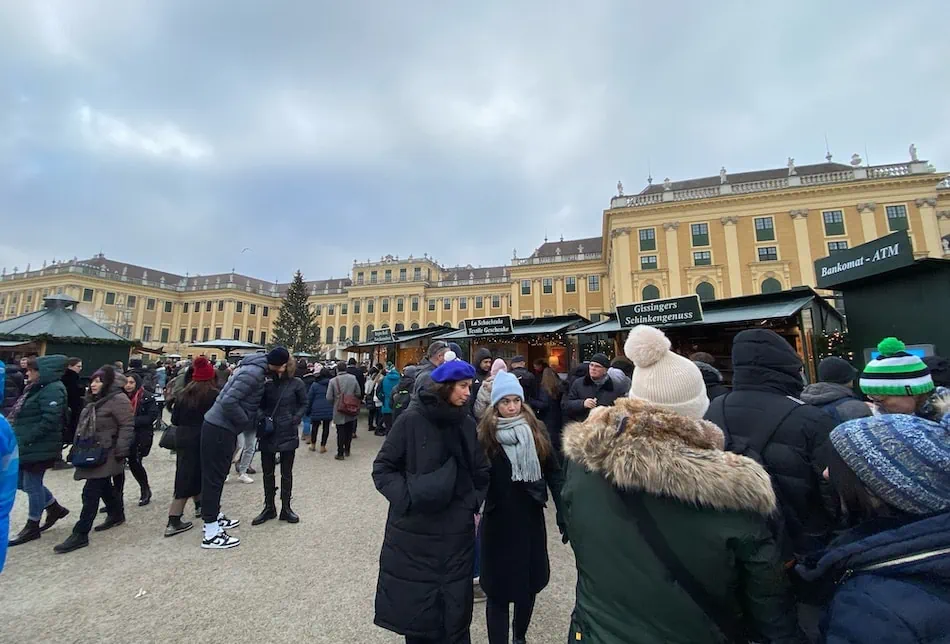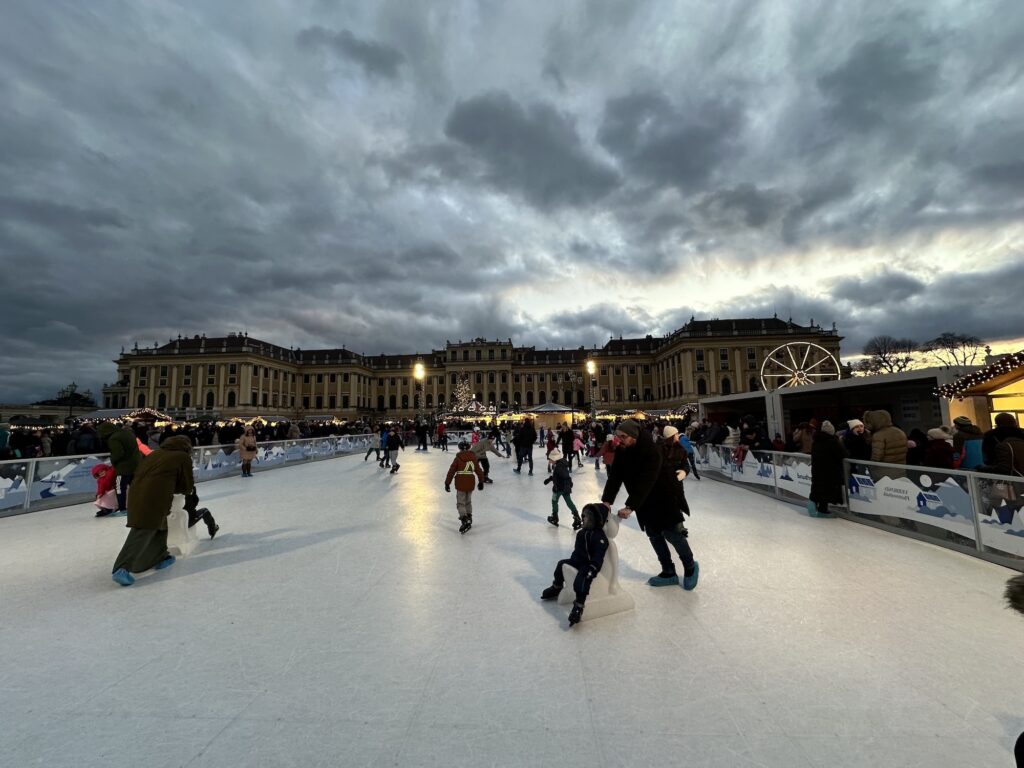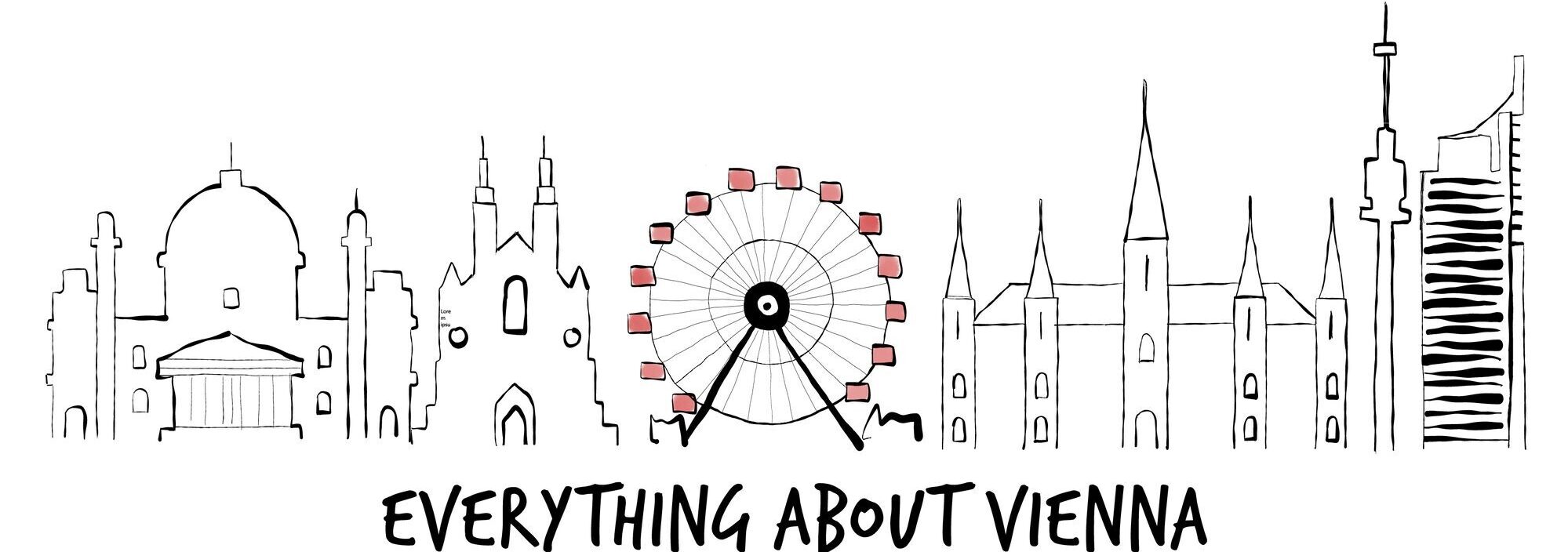Set against the imperial backdrop of Schönbrunn Palace, the former summer residence of the Habsburgs, this Christmas market combines festive cheer with Viennese history. The Schönbrunn Christmas market is known for its elegant atmosphere, high-quality products, and family-friendly activities. It feels more refined than the bustling city centre markets, making it a favourite for visitors who want to enjoy a more relaxed and regal Advent experience.
History and tradition
The market at Schönbrunn Palace started in the 1990s and has since become one of the most prestigious in Vienna. Unlike the more commercial city centre markets, Schönbrunn emphasizes quality and tradition. Many of the stalls are run by long-established Austrian artisans, and the market has gained a reputation for being one of the best places to find authentic, handmade gifts.
Schönbrunn was once the summer residence of the Habsburg emperors, and the market aims to reflect that heritage. Instead of chasing crowds with flashy stalls, the focus here has always been on quality and authenticity, as if to honour the palace’s imperial past.
Atmosphere and highlights

Few markets can compete with the setting of Schönbrunn. The palace façade, beautifully illuminated in warm golden light, creates a majestic backdrop for the rows of decorated stalls arranged in the spacious courtyard. A large Christmas tree stands at the centre, and festive music often drifts through the square, adding to the serene atmosphere. Compared to Rathausplatz or Stephansplatz, the mood here is calmer, more elegant, and less crowded.
Food and drinks
The culinary offering at Schönbrunn is firmly rooted in Austrian tradition. Stalls sell Bratwurst, Käsekrainer, and Maroni (roasted chestnuts), alongside local specialities like Kartoffelpuffer (potato pancakes). Sweet options include Strudel, Kipferl, and Lebkuchen (gingerbread).
For drinks, there’s a wide choice of Glühwein (mulled wine) and Punsch (punch), often made with regional ingredients such as apricots from the Wachau or Styrian apples. Non-alcoholic Kinderpunsch is also available, making it a good stop for families. Compared to smaller markets, the focus here is on quality rather than variety, prices are a little higher, but the taste and presentation live up to the imperial setting.
Shopping and crafts
The Schönbrunn market is well-known for its emphasis on handcrafted and Austrian-made products. Stalls feature ceramics, wood carvings, glass art, and textiles, as well as gourmet specialities like jams, honey, and liqueurs. Unlike at more commercial markets, you won’t see mass-produced souvenirs here. Instead, you’ll find items that reflect Austrian craftsmanship and tradition, typically perfect for thoughtful gifts.
You’ll often find ornaments and artwork featuring the palace façade or the Gloriette, as well as Sisi-inspired gifts like jewellery, perfumes, and soaps that recall Empress Elisabeth, one of Austria’s most beloved figures. Some vendors also offer speciality foods and liqueurs branded with Schönbrunn’s name, making them unique souvenirs that you won’t easily find elsewhere.
Unlike the more commercial markets, the selection here feels carefully curated. Prices reflect the high quality, but if you’re looking for a meaningful souvenir tied directly to Vienna’s imperial past, Schönbrunn is one of the best places to shop.
Many stalls at Schönbrunn sell items inspired by Empress Elisabeth (“Sisi”), from delicate jewellery to soaps and perfumes. Some of these are beautifully made by Austrian artisans, while others lean more toward tourist trinkets. Take your time to look closely at the quality, if you want a lasting souvenir, go for the handmade pieces rather than the mass-produced versions.
Activities and entertainment

For children, there is a Christkindl workshop where they can bake cookies or create crafts, keeping them entertained while parents explore the market. Music is another important part of the Schönbrunn market: choirs and small ensembles regularly perform Christmas carols and classical pieces in front of the palace, creating a festive yet refined mood.
Besides the festive concerts and children’s programs at the Christmas market at Schönbrunn Palace, Schönbrunn adds a very Austrian touch to its Christmas market with a dedicated Eisstockschießen lane. This traditional winter sport, similar to curling, is played in teams and has been a popular pastime in Austria for centuries. Visitors can join in or simply watch the matches, which bring a playful and authentic atmosphere to the imperial setting.
If you want to give it a try, come early in the afternoon when it’s less busy, and don’t worry if you’ve never played before, the rules are easy to pick up.
Combine with a visit to the palace
One of the advantages of this market is its location. A visit to the Schönbrunn Christmas market is the perfect opportunity to also explore the palace itself. You can combine a stroll along the market stalls with a guided tour of the imperial rooms, or take a walk through the palace gardens and even up to the Gloriette for a panoramic winter view of Vienna.
Practical information
- Opening dates: From the 6th of November until December 26, after which it often continues as a New Year’s market until early January.
- Opening hours: Daily from around 10 am until 9 pm (shorter hours on Christmas Eve and New Year’s Eve).
- Location: Schönbrunn Palace, 13th district.
- How to get there: Metro U4 to Schönbrunn or Hietzing, or tram 10 and 60.
- Entry: Free.
Local tips
- Visit during the day: Schönbrunn is stunning in the daylight, especially if you combine the market with a palace tour or a winter walk in the gardens.
- Try regional products: This market is one of the best places to taste specialities from different Austrian regions.
- Stay for the music: Evening concerts add a special touch to the elegant setting.
- Come after Christmas: The market continues as a New Year’s market, which is much quieter but just as charming.
Final thoughts on the Christmas market at Schönbrunn Palace
The Christmas market at Schönbrunn Palace is one of Vienna’s most elegant and atmospheric Advent markets. With its emphasis on quality, tradition, and authenticity, it offers a regal alternative to the busy city centre markets. Whether you’re coming for the food, the crafts, or simply to enjoy the palace in its winter glory, Schönbrunn is an unforgettable part of Vienna’s festive season.
One detail that makes this market stand out is that it doesn’t end on December 26 like most others. Instead, it continues as a New Year’s market, shifting the mood from Advent to celebration. This makes Schönbrunn one of the best places in Vienna to experience the transition from Christmas to the New Year.

